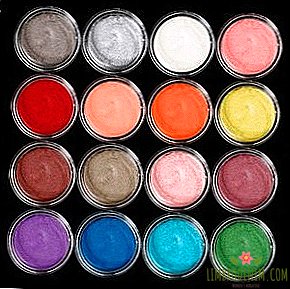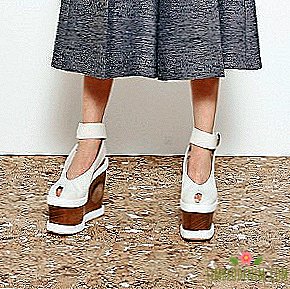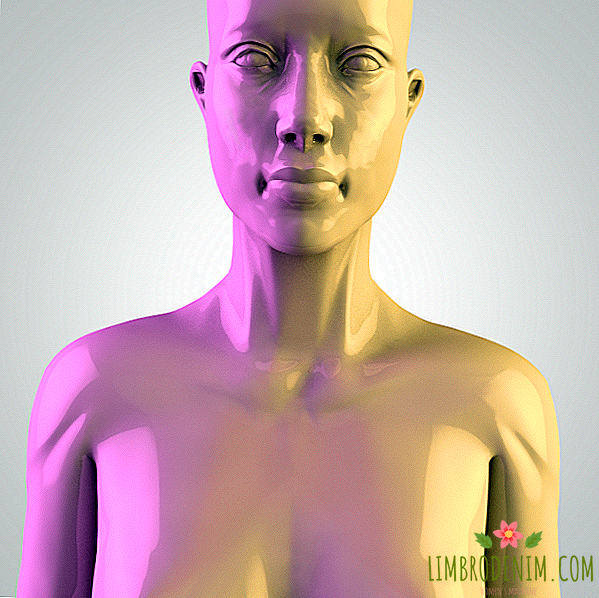Pineapple leather and printed clothing: Innovations that change fashion
It is difficult to argue that the production of clothing seriously pollutes ecology and harm to human health. And despite the fact that more and more people support reasonable consumption, this is not enough to get out of the situation. But innovations that can turn the fashion industry around are not fiction. Here are some of these, thanks to which the hope for an environmentally safe future still arises.

Things that turn into fertilizer
Recycling and reuse of old clothes is not a new trend; many companies are engaged in this, including the giants H & M and Levi's. True, it does not give any results, it’s almost impossible to say - the same brands continue to produce mountains of goods, and constant innovations only encourage people to buy more and more, and then to throw them away. But this vicious circle may one day prove to be a safe and even environmental-friendly process. For example, if the clothes will quickly decompose and turn into real fertilizer.
The course for the production of such "multifunctional" products have already taken in the company C & A. They created T-shirts that, when they hit the landfill, turn into compost in just eleven weeks. But the materials must be appropriate - from one hundred percent organic cotton, without synthetics.
Swedish brand Houdini Sportswear also set out to "create a system in which nothing is lost." And it has already proven that it works. Thus, Swedish chef Sebastian Toureson prepared and served dishes from vegetables grown with the help of Houdini Sportswear compost, which she turned into in six months. The company produces more than 90% of its range of recycled, renewable or biodegradable fabrics.
New eco-friendly materials
We have already told how it is really difficult to find really natural clothes: even if it is made from natural raw materials, it is still treated with toxic chemicals. You can not always afford things from organic cotton - it is expensive and rare, because it is more difficult to grow. Therefore, eco-friendly and inexpensive alternatives are simply necessary. The company Orange Fiber, for example, proposed the following solution: take the skins from oranges from juice producers and turn them into cellulose threads. The capsule collection of light “citrus” material has already been presented by Salvatore Ferragamo.


If you can create a real silky fabric from waste oranges, then from pineapple leaves you can see poured leather. Look for a material called pinatex, which can replace unethical raw materials - shoes, accessories and even car seat covers are already made from it. So that animal skin does not decompose, it is treated with 250 chemicals (and these are toxins and heavy metals: hexavalent chromium, aldehyde, cyanide, zinc, and lead). Synthetic materials cannot become an alternative, because their production and utilization are toxic.
In many countries, any waste from gardening is discarded or incinerated. Ananas Anam considered it wasteful, so it began to buy leaves from farmers in the Philippines, which provided them with additional income. The result is at least a flying Trussardi dress, made, however difficult to imagine, from pineapple leaves.
Artificial diamonds can be called a real breakthrough, which can fundamentally change the usual perception of luxury. No more dangerous mines and mining of non-renewable resources. It sounds fantastic, but in fact, Diamond Foundry’s engineers only demonstrate how the laws of physics can work. For the birth of diamonds need heat as strong as in an explosion. To recreate it in the laboratory, scientists have built plasma reactors that are powered by solar energy. A single diamond is laid in them, under the action of heat, atoms cling to the crystal and increase in size - this is how new gems literally grow. Scientists note that in each cycle, you can use the same natural diamond to create many jewels.

Electronic textiles
The development of electronic textiles has long been gaining momentum. They are even interested in the mass market, so that soon everyone can afford to buy a “smart” thing. Few people will be surprised, for example, with materials capable of heating: with the help of built-in wires or threads, as well as with a compact battery, you can “warm up” a jacket or coat right on yourself. In some models, the temperature is even adjustable.
A more sophisticated technology is textiles that read human biometric data. It will be useful, of course, for athletes and those who need constant monitoring of their health. Electronic clothing reads symptoms of the disease, respiratory rate and heart rate, activity levels, and energy expended. Then a special application generates individual recommendations for training and even treatment. The sample has already been submitted by the specialized firm OMsignal and Ralph Lauren in 2015. Their sports jacket, PoloTech, had all the functions listed, while the iWatch was cheaper - $ 295. “Smart” accessories are inferior to textiles not only in price, but also in convenience: in the future we will still forget them at home, whereas this number will not work with a full wardrobe of “smart” clothes.
In addition, any thing, it seems, will soon become a kind of continuation of your smartphone. With the help of clothes, we will literally manage the phones: receive calls and read messages, change the volume of music and switch songs, use the navigator. A jacket with such functions has already been created by Google in conjunction with Levi's - on the website of the jeans brand you can buy both female and male models. The technology of electronic textiles is called Jacquard: it is a yarn that combines ordinary threads (for example, cotton) and metal alloys. They have all the same properties as regular textiles, so they can be used for ordinary spinning equipment. Alloys serve as sensors, and the signal is transmitted via Bluetooth: just configure any convenient gesture - tapping or scrolling - to control the smartphone through the jacket and not reach it.
Moreover, the “smart” thing promises to become even more functional, because the applications with which it is connected are also developing. Everyone will download the necessary functions to him personally and adjust the thing for themselves.

Clothes printed on a 3D printer
Some designers who already use 3D printers to create clothes predict that in the future they will replace mass production, because everyone will be able to print their outfit at home. Stores will sell not things, but only a design that can be recreated right there - with the correct proportions, size and in the color you like. Such prospects seem, of course, vague, if we consider how many people and money are involved in the production of clothing around the world - in general, if this happens, it is unlikely in this century.
However, designer Danit Peleg, who created the first collection on a 3D printer back in 2014, believes that it is possible to change the industry. “It took me 2000 hours to print the first five outfits. Now there are printers that work three times faster: the process will take a few hours soon, and in the end just a few minutes,” she said. However, it is still difficult to imagine how comfortable, practical and beautiful printed clothes will be. Is that the usual sewing, knitting and decor will be unnecessary - only if you want to decorate your seamless costume with them in order to look "as usual".
Photo: Houdini, Ananas Anam, Levis, Danit Peleg





